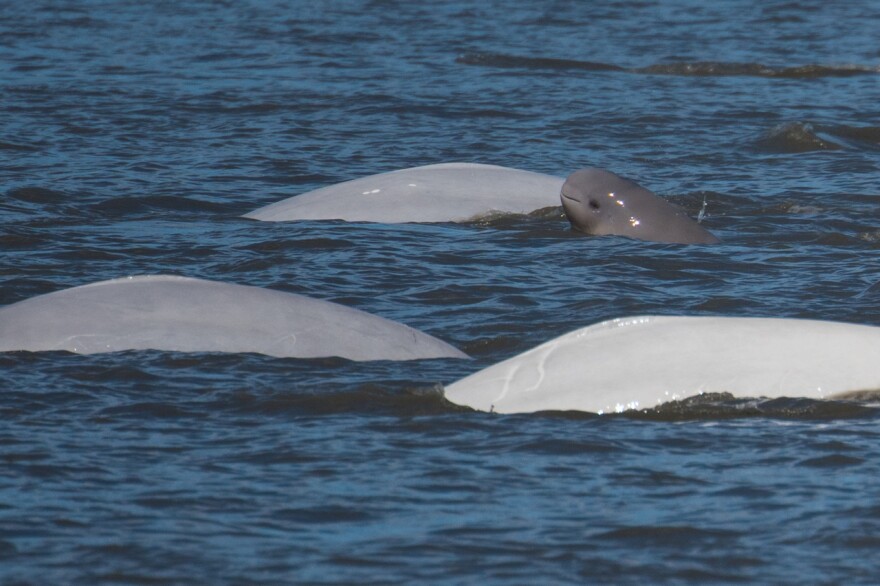Belgua whale watching has wrapped up for the season. The organized, scientific variety anyway. The fall beluga count administered by several government agencies and volunteer groups around Cook Inlet formally finished its work for 2019 last week. KDLL’s Shaylon Cochran spoke with Kenai resident Ed Schmitt of the Alaska Wildlife Alliance about the group’s work documenting the endangered belguas, whose numbers still hover below 350 animals.
“We were a partner with the Alaska Beluga Monitoring Group. (It went) real well. We started monitoring the 15th of August. From late August on, they were in the mouth of the Kenai almost every day. We started the beluga count program a year ago. The belgua count is where there’s a coordinated effort all around Cook Inlet to pick a time to try to get a rough count of the belugas in Cook Inlet. We started that last year and continued that into this year. They wanted to expand the citizen science project to some other locations around Cook Inlet to look more thoroughly on a much more regular basis for three months as to where belugas might be and how many there were and I said that would be a great project for the Alaska Wildlife Alliance and that’s how we ended up partnering with them.”
Citizen Science
“It (fills in a data gap). It’s the perfect situation in that people that are interested in them can spend some time with them and the data does become very, very valuable. It makes other people interested because every day I was down there, people would stop by and when they saw were looking at whales, would get really excited about seeing them. We literally had people from all over the world. And it’s hard to get a staffer or a biologist to go down there and look for beluga whales. That’s just tough work if you have to do that day after day. It’s a perfect combination, and then with the training, we got pretty good data. The preliminary data is very good and will lead to an even more comprehensive program next year, I hope.”
“It started out (with) the Alaska Beluga Whale Monitoring Partnership, which is a branch of NOAA up in Anchorage, and Alaska Wildlife Alliance for the Kenai and the Kasilof, there’s a Beluga Whale Alliance in Girdwood. Down here, we were able to work with a professor at the college, Alison Gardell, and get some college students involved. Alison is a Ph. D biologist and has some wonderful ideas for what’s going to happen next year.”
Highlighting Conservation
“I’m so excited about Alaska Wildlife Alliance (because) our mission is to identify and preserve intact ecosystems and manage them for biodiversity. And that sounds so simple, but that concept gets lost if all you think of are salmon in the Kenai River. Well, the Kenai River is an incredibly diverse ecosystem with how many different species that all depend on it. And management for biodiversity, the more of everything, the better the system works. And this just hits home. There are all kinds of things going on in the Kenai River. If you’re out there looking for that, you end up seeing (it). And that certainly enhances my appreciation of it and reinforces that humans are animals living in an ecosystem and the more diverse and productive that is, the better humans are.
I’ve been thinking a lot of Alan Boraas lately, and his concept of sustainability, the Culture of the North. We don’t come and conquer and change. We fit it. We’re a big part of it. That’s been resonating with me, especially in the last week and a half. I view this as another effort to get that idea across; we’re here to fit in with all of this and we’re richer because of it.”
The Alaska Wildlife Alliance and its partners will resume whale counts across Cook Inlet next spring.




